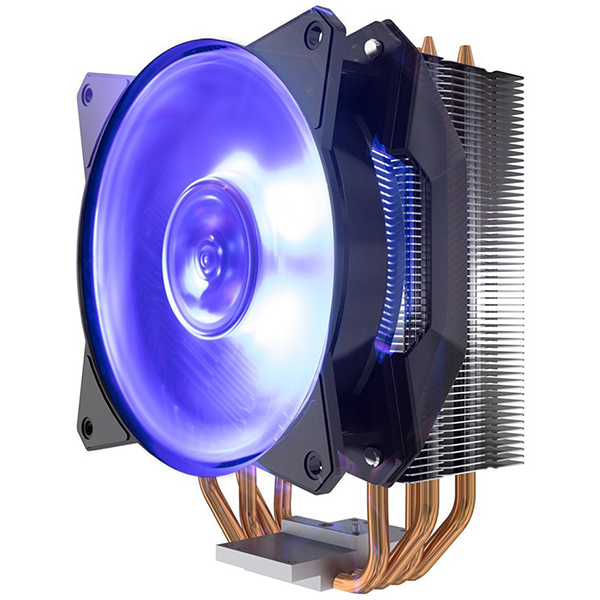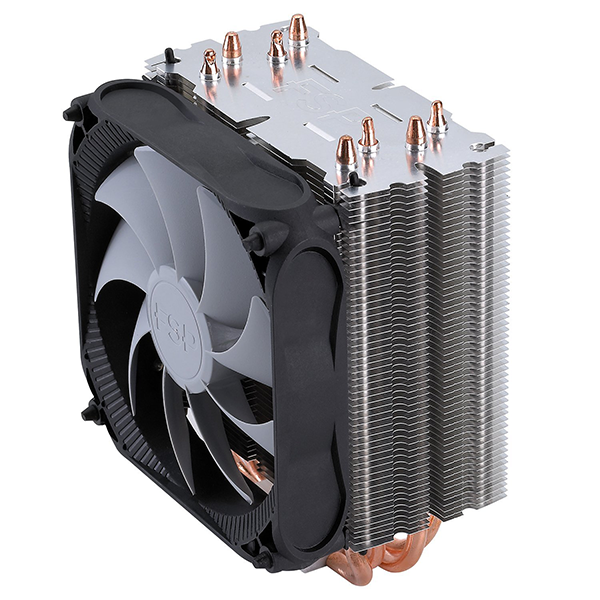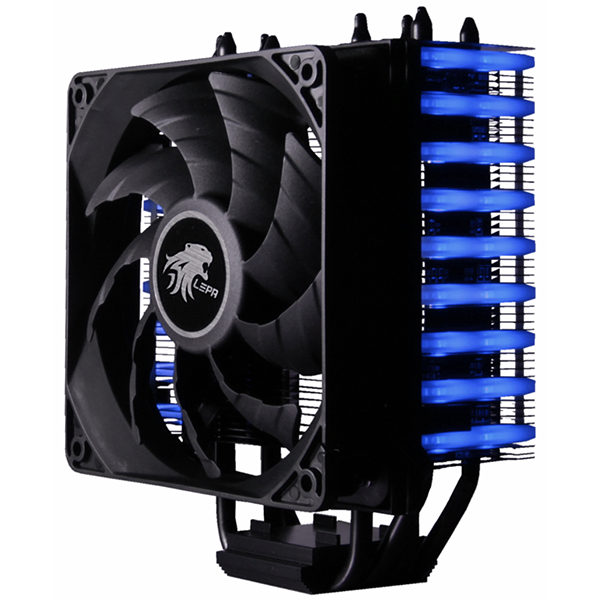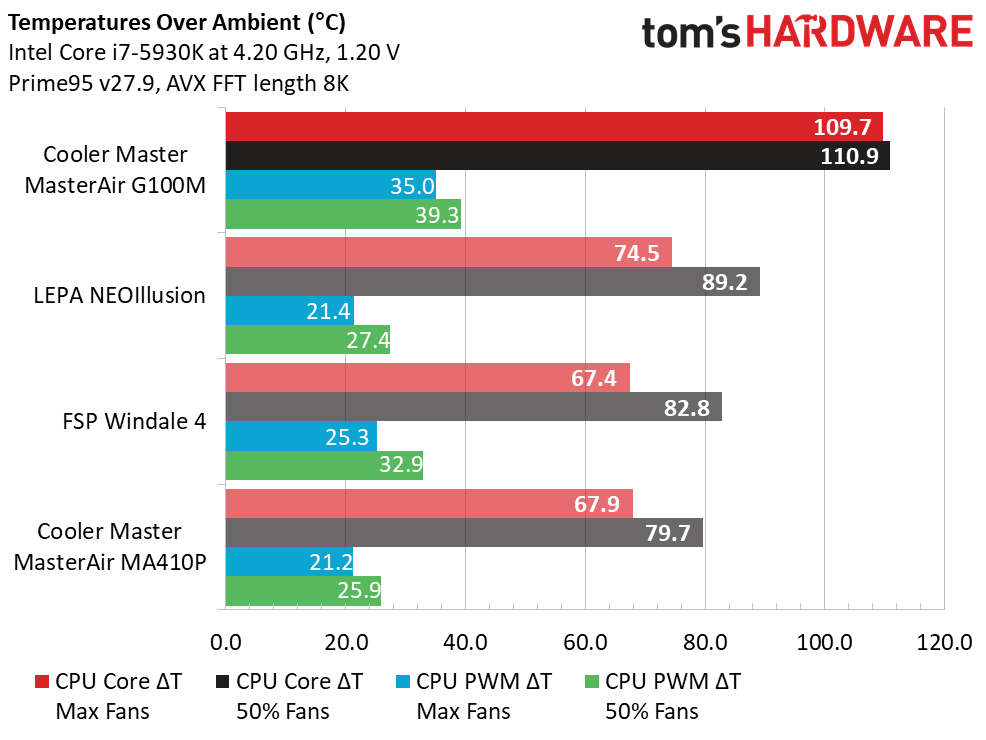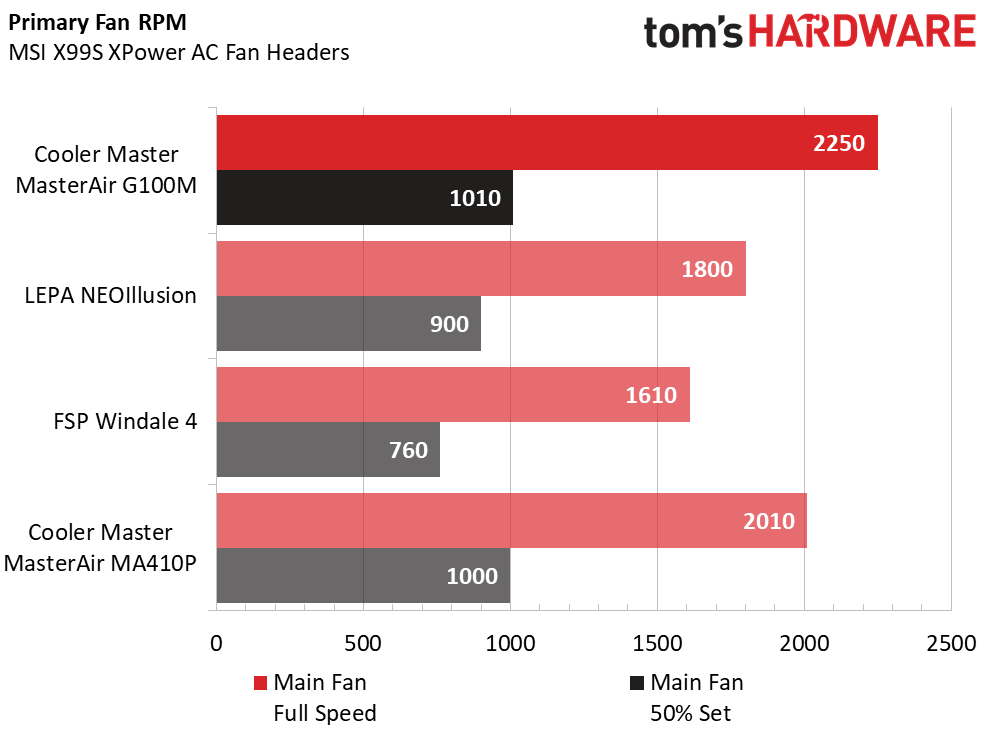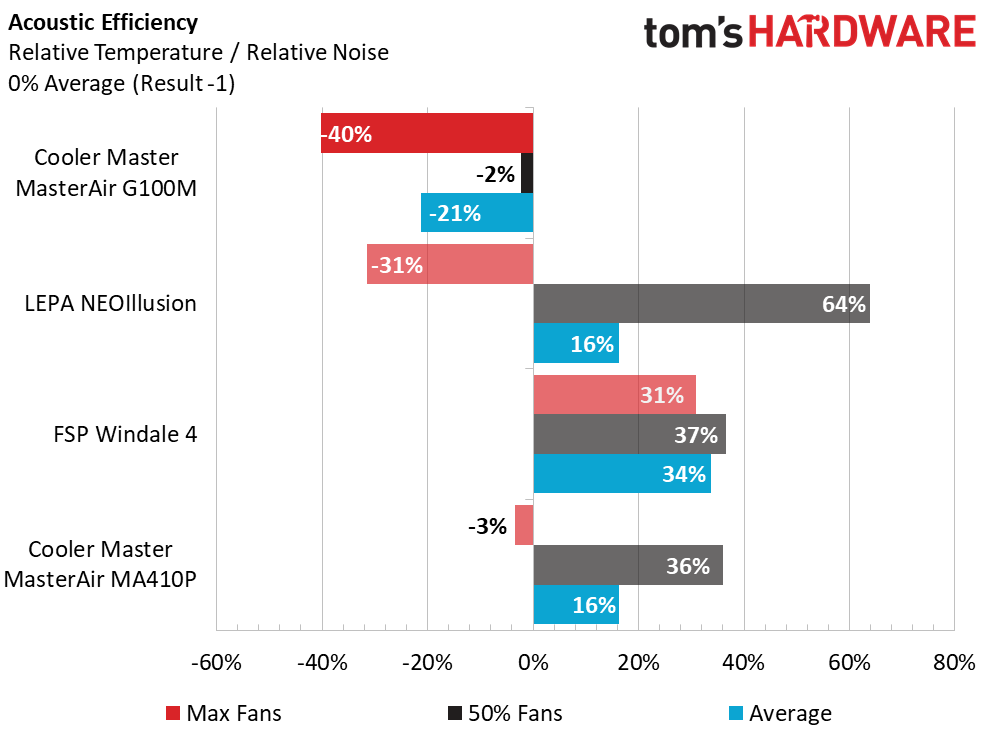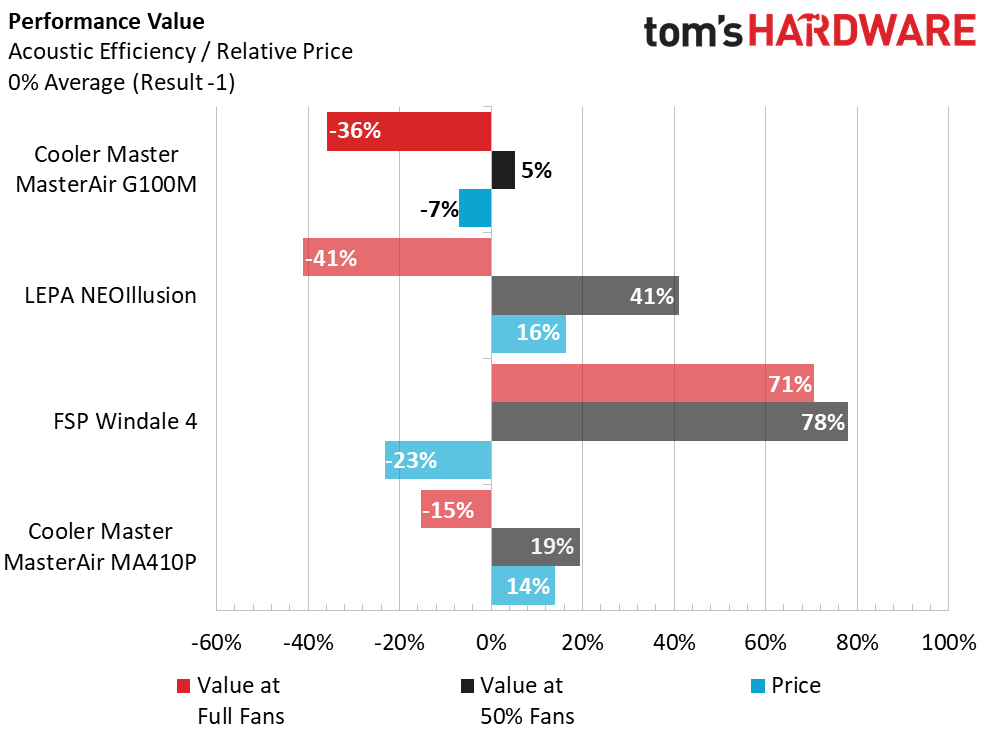Cooler Master MasterAir G100M CPU Cooler Review: From Roswell With Love
Why you can trust Tom's Hardware
Testing Results & Conclusion
Comparison Products
For comparison testing, we utilize data from our standardized testing methods collected from prior CPU-cooling reviews on our six-core Core i7 5930K, running at 4.2GHz and 1.20V. We will compare the result data from the Cooler Master MasterAir G100M with that of coolers similar in size and price: the LEPA NEOIllusion, the FSP Windale 4, and the Cooler Master MasterAir MA410P.
Cooler Master advertises the G100M as able to cool CPUs up to 130W, which makes testing with our overclocked Core i7-5930K slightly more than its advertised capacity, as our Core i7 chip has a rated 140W thermal ceiling at factory clocks and vCore. This cooler is also marketed as supporting Intel Haswell-E processors, so we are pushing the absolute limits on these tests, and we see this in the results. The G100M simply cannot keep up with the thermal load being applied, while the rest of the group, including the G100M’s cousin, the MasterAir MA410P, does rather well.
It should also be noted that the 50% fan-speed temperature scale could not be accurately represented, due to our test system's processor scaling back to run as low as 3.3GHz due to excessive thermal load throttling. Data for this entry is provided with the understanding that the CPU operated on average at around 3.5GHz.
The G100M uses a 90mm-diameter RGB fan, making it the smallest set of blades of the testing group, but also the fastest-spinning. Typically, when we see high-RPM fan speeds, we often see this translate into higher noise levels.
Interestingly enough, the speed of the G100M’s fan was reflected in only nominal noise levels. In fact, our noise-level reading matches that of the other Cooler Master offering of the group, the MA410P, which comes equipped with a 120mm RGB fan.
Our Acoustic Efficiency chart combines the thermal load performance with the observed relative noise levels at both full and half fan speeds. Given that the G100M struggled under load, it should be scant surprise that the graph swings to the far left of our 0% average line.
Our Performance Value measure gives us an overall view of cost-effectiveness and performance by including individual-unit retail pricing as a comparison to the group's unit-cost average. The G100M actually slides in just a few dollars less than the group average, with an MSRP of $40. That does help offset some of the prior thermal issues, but not enough for it to bounce back fully.
Get Tom's Hardware's best news and in-depth reviews, straight to your inbox.
Conclusion
The MasterAir G100M can do what the other tower coolers in this test group cannot: squeeze into low-profile installations where the case's ceiling height is at a premium. While this works for small HTPC builds, the G100M did struggle with larger thermal-design CPUs or those that might be heavily overclocked (and will do so in cases where "both" apply). This cooler has a place, though, if unique looks and theme are what you're after. It doles out a large dose of cool factor with its low-slung Roswell-inspired styling.
Still, if you have the vertical chassis space for a typical tower cooler, we would recommend considering other cooling options, especially if overclocking is in the cards. And for $10 more, the Cooler Master MasterLiquid ML120L RGB AIO cooler is a healthy water-cooling alternative to the G100M if you need both a low-profile cooler and compact hardware.
MORE: Best CPU Cooling
MORE: How To Choose A CPU Cooler
MORE: All Cooling Content

Garrett Carver is a contributor for Tom’s Hardware, primarily covering thermal compound comparisons and CPU cooling reviews; both air and liquid, including multiple variations of each.
